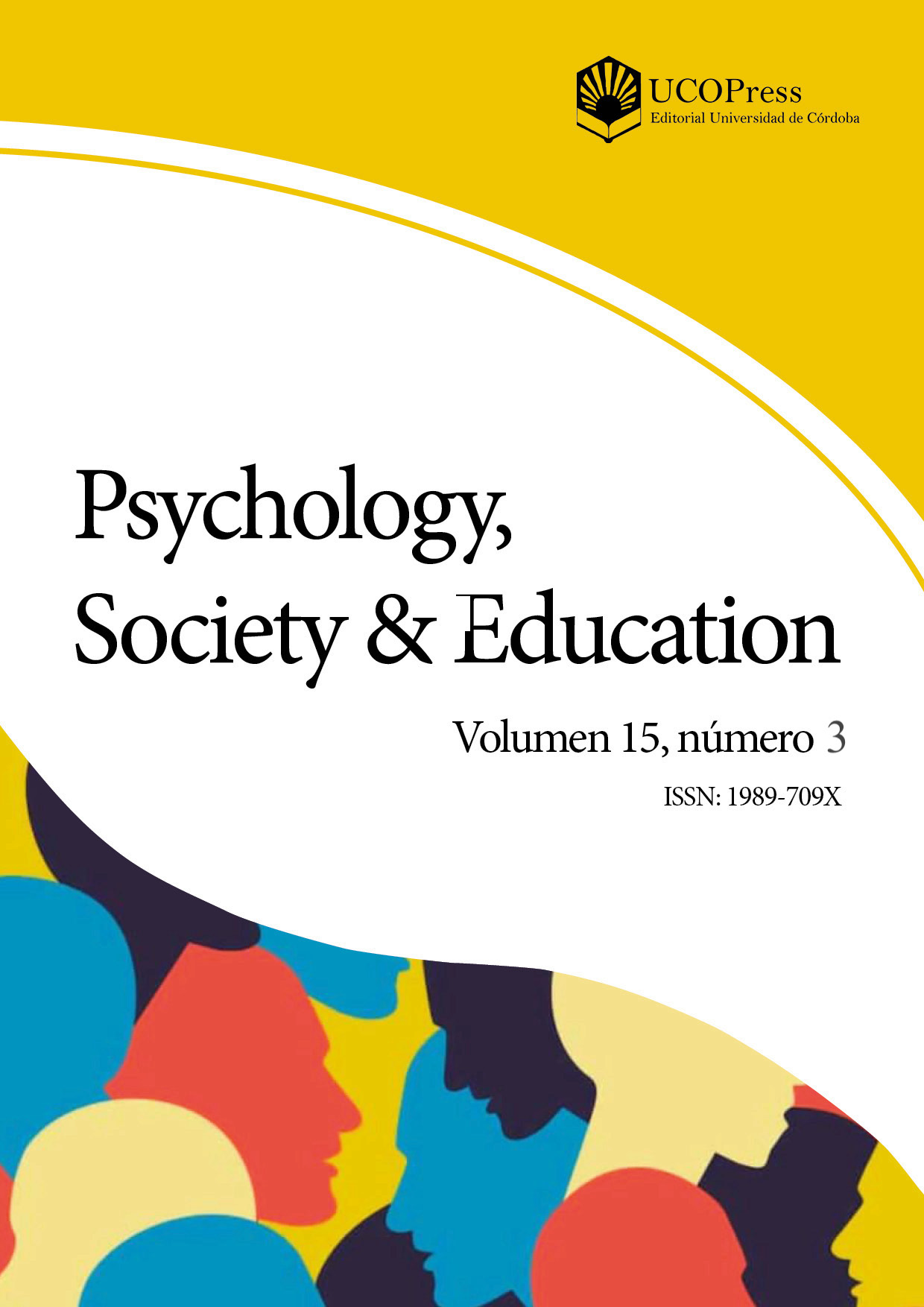Educational use of connectivity in childhood and adolescence: a systematic literature review
Main Article Content
Abstract
Internet connectivity during childhood and adolescence entails risks and opportunities in several vital areas. Specifically, this work focuses on identifying lines of research and intervention to take advantage of the digital connectivity of minors in the educational context. To this end, a systematic review of the literature based on the PRISMA method and the Web of Science and Scopus databases is proposed for the search and selection of articles. This study focuses on five key fields: historical trajectory, research methodology, findings, implications for research and educational practice, and future lines of research. Of the 68 papers analyzed, it can be observed that: (1) they have recently increased their publication; (2) qualitative approaches predominate, evaluating the effects of educational interventions, mainly on children and young people in Europe and at the Primary and Secondary Education levels; (3) it is concluded that the environments where children’s digital connectivity has had a positive impact include improved learning and academic performance, digital inclusion and accessibility, digital creation and production, collaborative learning, and media and digital education; (4) it suggests fostering media literacy and digital competence education from an early age to prevent risks and take advantage of opportunities; and (5) it encourages exploring new areas to optimize the use of digital connectivity among children. This review reveals the areas digital connectivity has had a positive impact on children’s education.
Downloads
Publication Facts
Reviewer profiles N/A
Author statements
- Academic society
- Psychology, Society & Education
- Publisher
- UCOPress. Universidad de Córdoba
Article Details

This work is licensed under a Creative Commons Attribution-NonCommercial-ShareAlike 4.0 International License.
The journal retains the economic copyright of contributions that are accepted for publication. This means that it acquires the exclusive use of the document to be edited, disseminated, preserved, etc. in any support and for the time stipulated by the local legislation that regulates the performance of the publication.
![]() Psychology, Society & Education is published under CC BY-NC-SA 4.0
Psychology, Society & Education is published under CC BY-NC-SA 4.0
References
Belo, N., McKenney, S., Voogt, J., y Bradley, B. (2016). Teacher knowledge for using technology to foster early literacy: A literature review. Computers in Human Behavior, 60, 372-383. https://doi.org/10.1016/j.chb.2016.02.053 DOI: https://doi.org/10.1016/j.chb.2016.02.053
Fernández-Batanero, J. M., Montenegro-Rueda, Fernández-Cerero, M. J., y García-Martínez, I. (2022). Digital competences for teacher professional development. Systematic review. European Journal of Teacher Education, 45(4), 513-531. https://doi.org/10.1080/02619768.2020.1827389 DOI: https://doi.org/10.1080/02619768.2020.1827389
García-Hernández, A., García-Valcárcel Muñoz-Repiso, A., Casillas-Martín, S., y Cabezas-González, M. (2023). Sustainability in digital education: A systematic review of innovative proposals. Education Sciences, 13(1), Artículo 33. https://doi.org/10.3390/educsci13010033 DOI: https://doi.org/10.3390/educsci13010033
Ihmeideh, F., y Alkhawaldeh, M. (2017). Teachers’ and parents’ perceptions of the role of technology and digital media in developing child culture in the early years. Children and Youth Service Review, 77, 139-146. https://doi.org/10.1016/j.childyouth.2017.04.013 DOI: https://doi.org/10.1016/j.childyouth.2017.04.013
Kalolo, J. F. (2019). Digital revolution and its impact on education systems in developing countries. Education and Information Technologies, 24, 345-358. https://doi.org/10.1007/s10639-018-9778-3 DOI: https://doi.org/10.1007/s10639-018-9778-3
Mantilla, A., y Edwards, S. (2019). Digital technology use by and with young children: A systematic review for the Statement on Young Children and Digital Technologies. Australasian Journal of Early Childhood, 44(2), 182-195. https://doi.org/10.1177/1836939119832744 DOI: https://doi.org/10.1177/1836939119832744
Marsh, J., Plowman, L., Yamada-Rice, D., Bishop, J., Lahmar, J., y Scott, F. (2018). Play and creativity in young children’s use of apps. British Journal of Educational Technology, 49(5), 870-882. https://doi.org/10.1111/bjet.12622 DOI: https://doi.org/10.1111/bjet.12622
Miller, J. L., Paciga, K. A., Danby, S., Beaudoin-Ryan, L., y Kaldor, T. (2017). Looking beyond swiping and tapping: Review of design and methodologies for researching young children’s use of digital technologies. Cyberpsychology: Journal of Psychosocial Research on Cyberspace, 11(3), Artículo 6. https://doi.org/10.5817/CP2017-3-6 DOI: https://doi.org/10.5817/CP2017-3-6
Orben, A. (2020). Teenagers, screens and social media: A narrative review of reviews and key studies. Social Psychiatry and Psychiatric Epidemiology, 55, 407-414. https://doi.org/10.1007/s00127-019-01825-4 DOI: https://doi.org/10.1007/s00127-019-01825-4
Panjaburee, P., Komalawardhana, N., y Ingkavara, T. (2022). Acceptance of personalized e-learning systems: A case study of concept-effect relationship approach on science, technology, and mathematics courses. Journal of Computers in Education, 9, 681-705. https://doi.org/10.1007/s40692-021-00216-6 DOI: https://doi.org/10.1007/s40692-021-00216-6
Parmigiani, D., Benigno, V., Giusto, M., Silvaggio, C., y Sperandio, S. (2020). E-inclusion: Online special education in Italy during the Covid-19 pandemic. Technology, Pedagogy and Education, 30(1), 111-124. https://doi.org/10.1080/1475939X.2020.1856714 DOI: https://doi.org/10.1080/1475939X.2020.1856714
Romera, E. M., Camacho, A., Ortega-Ruiz, R., y Falla, D. (2021). Cibercotilleo, ciberagresión, uso problemático de Internet y comunicación con la familia. Comunicar, 67, 61-71. https://doi.org/10.3916/C67-2021-05 DOI: https://doi.org/10.3916/C67-2021-05
Sahronih, S., Purwanto, A., y Sumantri, M. S. (2019). The effect of interactive learning media on student’ science learning outcomes. En ICIET 2019: Proceedings of the 2019 7th International Conference on Information and Education Technology (pp. 20-24). https://doi.org/10.1145/3323771.3323797 DOI: https://doi.org/10.1145/3323771.3323797
Salmerón, L., García, A., y Vidal-Abarca, E. (2018). The development of adolescents’ comprehension-based Internet reading activities. Learning and Individual Differences, 61, 31-39. https://doi.org/10.1016/j.lindif.2017.11.006 DOI: https://doi.org/10.1016/j.lindif.2017.11.006
Sánchez-Serrano, S., Pedraza-Navarro, I. y Donoso-González, M. (2022). ¿Cómo hacer una revisión sistemática siguiendo el protocolo PRISMA? Usos y estrategias fundamentales para su aplicación en el ámbito educativo a través de un caso práctico. Bordón, 74(3), 51-66. https://doi.org/10.13042/Bordon.2022.95090 DOI: https://doi.org/10.13042/Bordon.2022.95090
Stephen, C., y Plowman, L. (2003). Information and communication technologies in pre-school settings: A review of the literature. International Journal of Early Years Education, 11(3), 223-234. https://doi.org/10.1080/0966976032000147343 DOI: https://doi.org/10.1080/0966976032000147343
Timotheou, S., Miliou, O., Dimitriadis, Y., Villagrá Sobrino, S., Giannoutsou, R. C., Martínez Monés, A., y Ioannou, A. (2022). Impacts of digital technologies on education and factors influencing schools’ digital capacity and transformation: A literature review. Education and Information Technologies, 28, 6695-6726. https://doi.org/10.1007/s10639-022-11431-8 DOI: https://doi.org/10.1007/s10639-022-11431-8
UNESCO (2021). Rewired Global Declaration on Connectivity for Education. UNESCO. https://unesdoc.unesco.org/ark:/48223/pf0000381482.locale=en
Van Endert, T. S. (2021). Addictive use of digital devices in young children: Associations with delay discounting, self-control and academic performance. PLoS ONE, 16(6), Artículo e0253058. https://doi.org/10.1371/journal.pone.0253058 DOI: https://doi.org/10.1371/journal.pone.0253058
Vidal-Hall, C., Flewitt, R., y Wyse, D. (2020). Early childhood practitioner beliefs about digital media: Integrating technology into a child-centred classroom environment. European Early Childhood Education Research Journal, 28(2), 167-181. https://doi.org/10.1080/1350293X.2020.1735727 DOI: https://doi.org/10.1080/1350293X.2020.1735727


